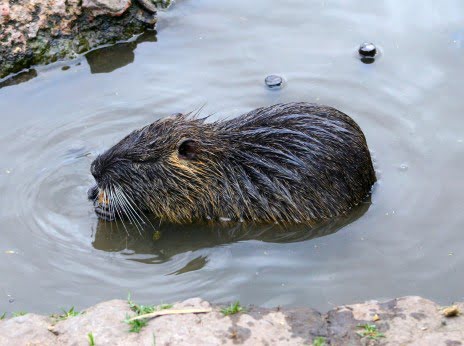BEAVERS
Beavers are semi-aquatic rodents native to North America and Europe. They are the only members of the family Castoridae, which contains a single genus, Castor. Genetic research has shown the European and North American beaver populations to be distinct species and that hybridization is unlikely.
Beavers are best known for their natural trait of building dams in rivers and streams, and building their homes (aka lodges) in the eventual artificial pond. They are the second largest rodents, after the capybara. Beavers continue to grow throughout life. Adult specimens weighing over 25 kg (55 lb) are not uncommon. Females are as large as or larger than males of the same age, which is uncommon among mammals. The habitat of the beaver is the riparian zone inclusive of stream bed. The habit of the beaver for hundreds of thousands of years in the Northern Hemisphere has been to keep these watery systems healthy and in good repair, although to a human observer, seeing all of the downed trees, it might sometimes seem that the critters are doing just the opposite. Beaver work as a keystone species in an ecosystem by creating wetlands that are utilized by many other species. The ability of beavers to radically alter landscape is amazing. Next to humans, no other extant animal does more to shape its landscape. Introduced to an area without its natural predators, as in Tierra del Fuego, beavers have flooded thousands of acres of land and are considered an unstoppable plague.
Dams
The dams are created both as a protection against predators, e.g., coyotes, wolves and bears, and to provide easy access to food during winter. It is both the sound of water in motion and the current that stimulates the beavers to build. If, for example, a pipe is placed under the dam to drain it the beavers may stuff it with a tree trunk unless the pipe inlet is protected with a large cage-like filter. They may repair any damage to the dam and build it higher as long as the sound continues. However, in times of high water, they often allow spillways in the dam to flow freely. Beavers have even attempted to build dams in response to recordings of water flowing even in the absence of water.
Destroying a beaver dam without removing the beavers takes a lot of effort, especially if the dam is downstream of an active lodge. Beavers can rebuild such primary dams overnight, but may not defend secondary dams as vigorously.
Lodges
The ponds created by well-maintained dams help isolate the beavers’ home, their lodge, which is also created from severed branches and mud. The lodge has underwater entrances to make entry nearly impossible for any other animal (however, muskrats have been seen living inside beaver lodges with the beavers who made it). A very small amount of the lodge is actually used as a living area. Contrary to popular belief, beavers actually dig out their den with an underwater entrance after they finish building the dam and lodge structure. There are typically two dens within the lodge, one for drying off after exiting the water, and another, drier one where the family actually lives.

